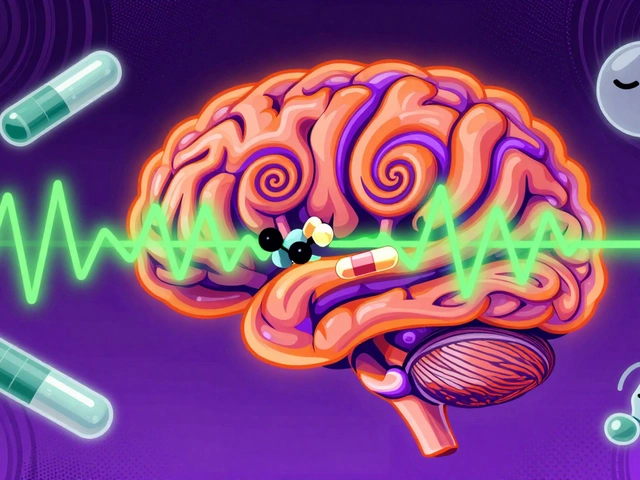Neurontin alternatives: better choices for nerve pain and seizures
Gabapentin (Neurontin) helps a lot of people, but it doesn’t work for everyone. Some get foggy thinking, dizziness, or little benefit. If that’s you, there are several realistic alternatives — some are other drugs in the same family, others work differently, and a few are non-drug approaches that can help just as much when used right.
Common medication alternatives and what to expect
Pregabalin (Lyrica) — very similar to gabapentin but often starts working faster and has more predictable dosing. Doctors often try 75 mg twice daily and adjust from there. Side effects include sleepiness and weight gain for some people.
Duloxetine (Cymbalta) — an SNRI antidepressant approved for diabetic nerve pain and fibromyalgia. It helps by changing how your brain processes pain. A typical dose used for pain is 30–60 mg daily. Watch for nausea and possible changes in blood pressure.
Amitriptyline or nortriptyline — older tricyclic antidepressants used at low doses (often 10–25 mg at night) for nerve pain and sleep. They’re cheap and effective, but can cause dry mouth, constipation, and drowsiness, so they’re not ideal for older adults or people with certain heart issues.
Carbamazepine and oxcarbazepine — anticonvulsants often used for trigeminal neuralgia and some neuropathic pains. They can work well but need blood tests and interaction checks because they affect liver enzymes.
Topical options — 5% lidocaine patches or high-concentration capsaicin patches are great for localized nerve pain and have fewer systemic side effects. You apply them only where it hurts.
Gabapentin enacarbil — a prodrug of gabapentin with steadier blood levels; sometimes better tolerated and dosed once or twice a day depending on the formulation.
Opioids and tramadol — they may reduce severe pain but come with addiction and side-effect risks. These are usually last-resort choices and should be used with a clear plan and monitoring.
How to pick the right option (practical tips)
Start by listing what you want to fix: pain level, sleep, mood, or side effects. Ask your prescriber which option fits your medical history, other meds, and daily life. Key questions: How quickly will this help? What side effects should I expect? Do I need blood tests or dose changes over time?
Try one clear change at a time so you can tell what helps. Don’t stop or switch suddenly — many of these drugs need slow tapers. Combine treatments when needed: for example, a low-dose antidepressant plus a topical patch, or medication plus physical therapy and cognitive-behavioral strategies. Keep a simple pain and side-effect diary for two weeks after any change; that makes follow-up visits more useful.
If you’re worried about interactions or safety, ask your pharmacist to review your full med list before starting anything new. Small, guided changes often give the biggest wins with the fewest surprises.
Top 10 Neurontin Alternatives: Exploring Effective Solutions for Pain and Seizures
This article delves into the exploration of ten alternatives to Neurontin, shedding light on their uses, benefits, and potential drawbacks. With each alternative, readers will gain insight into different medications that are commonly used to treat conditions such as neuropathic pain, seizures, and mood disorders. By comparing these options, individuals can find an appropriate solution tailored to their specific health needs. This comparative guide aims to assist patients and healthcare providers in making informed decisions.





